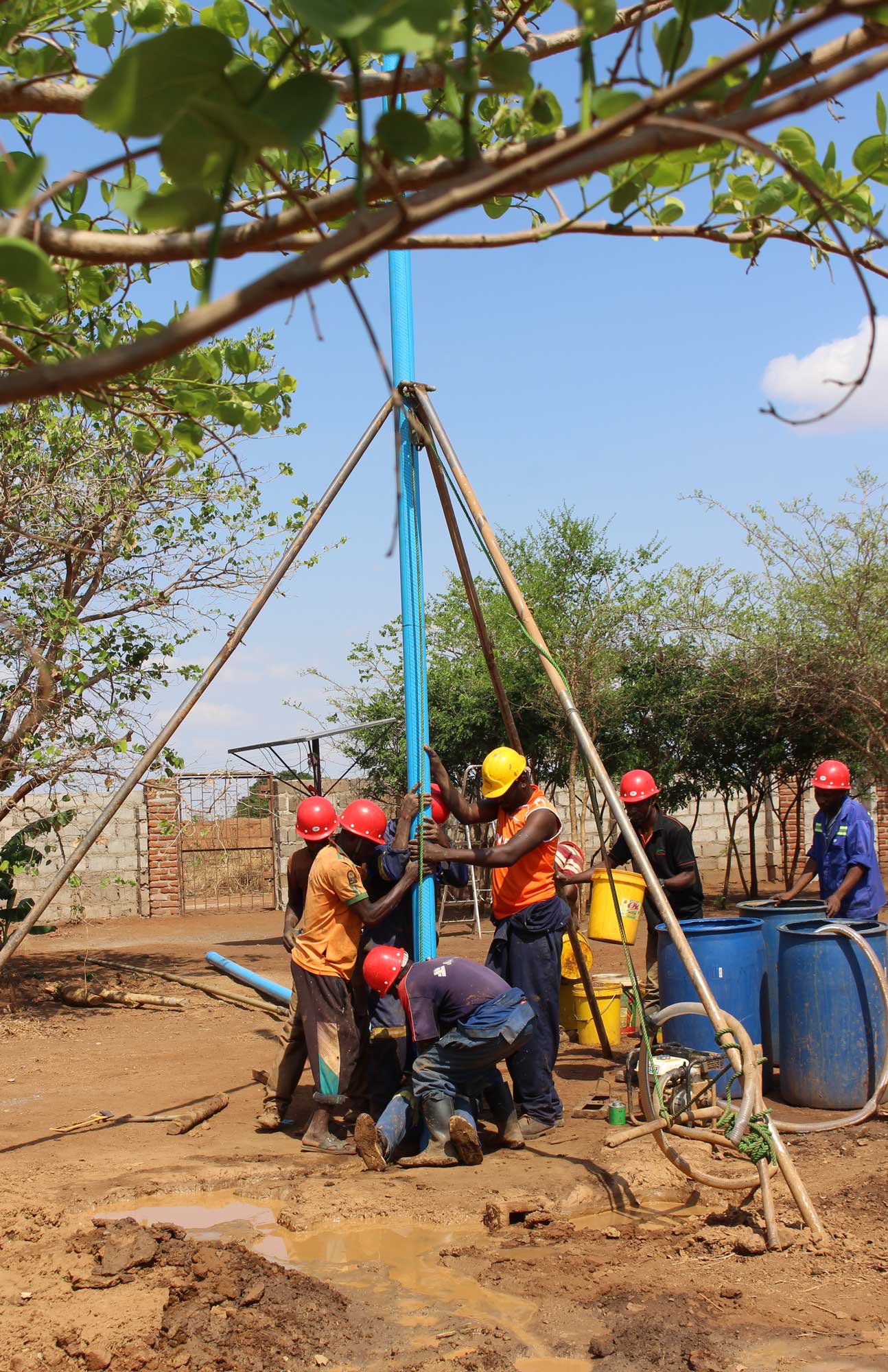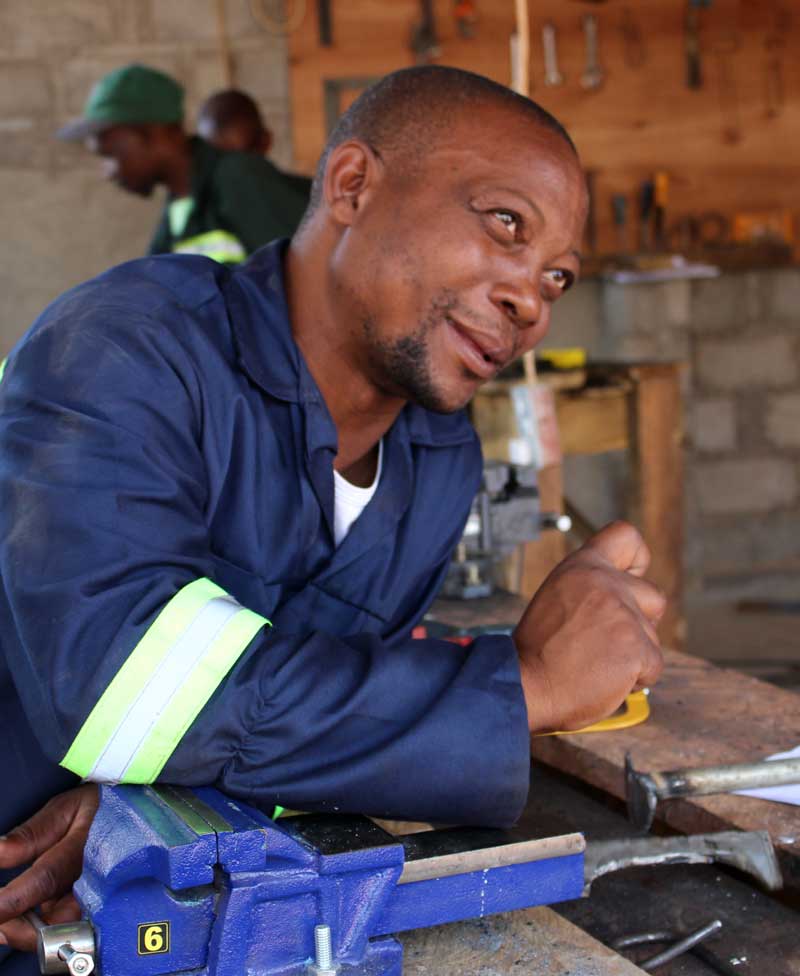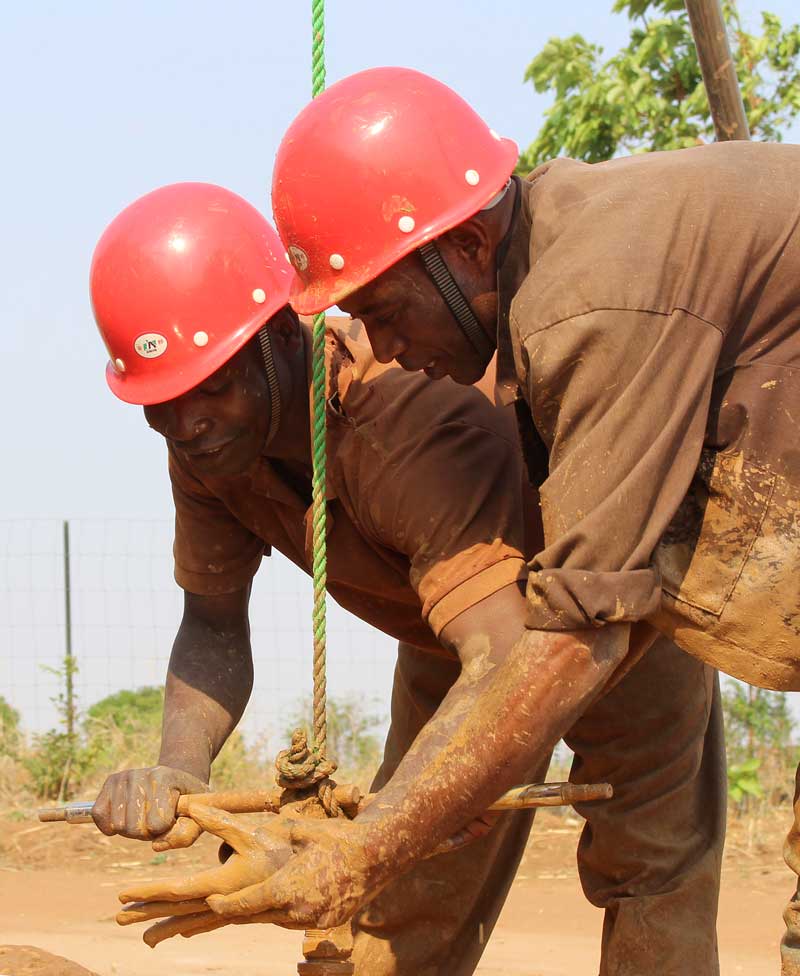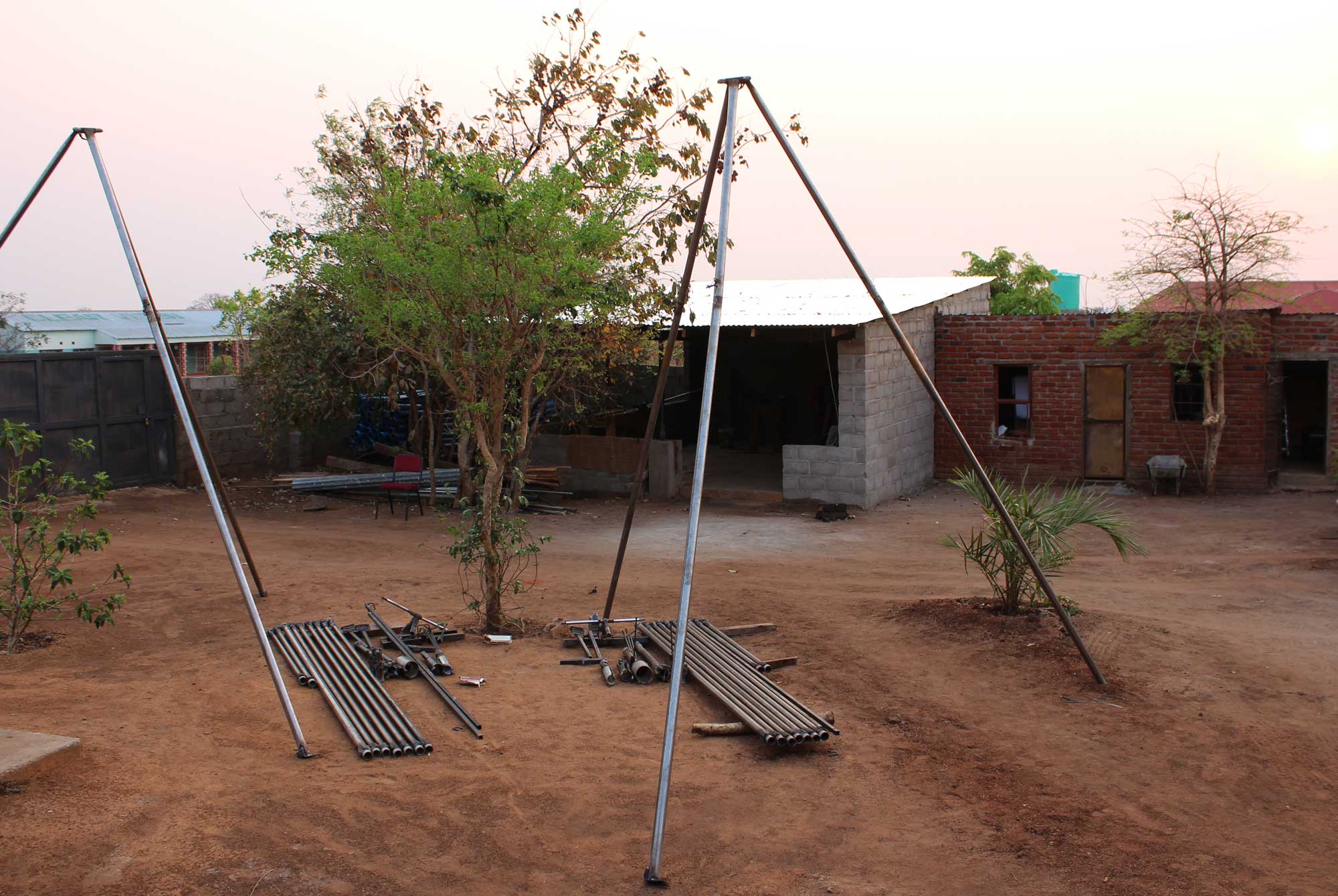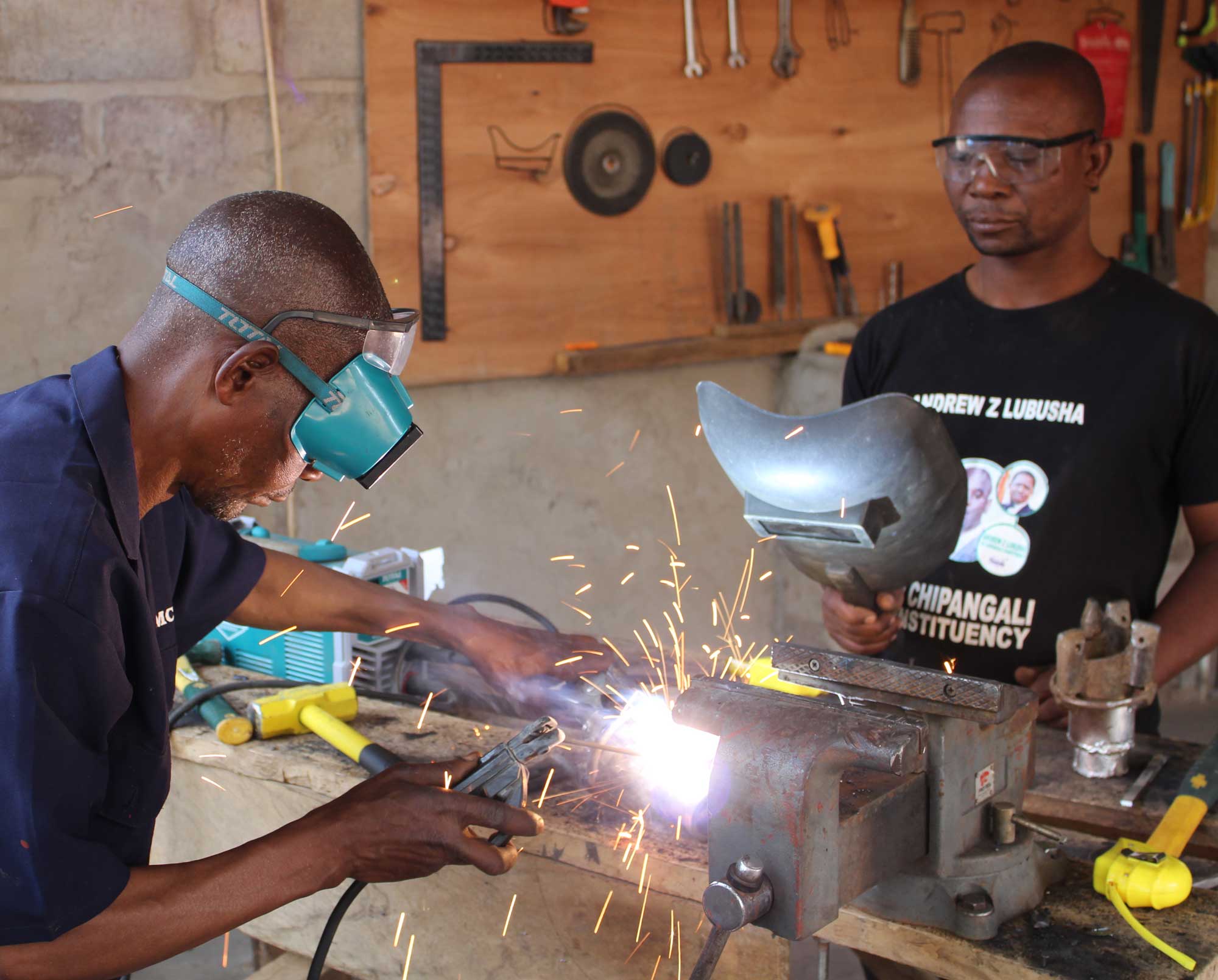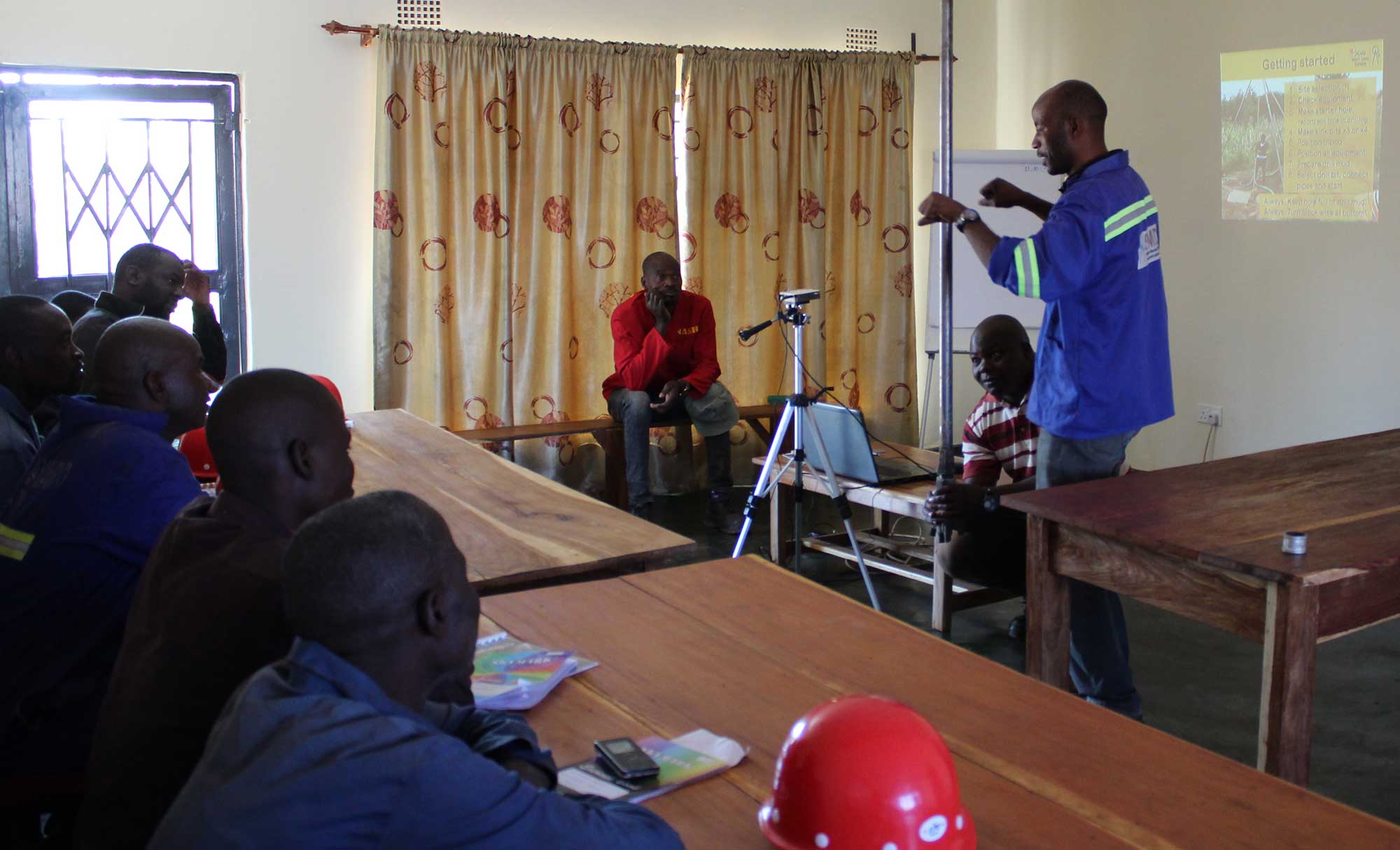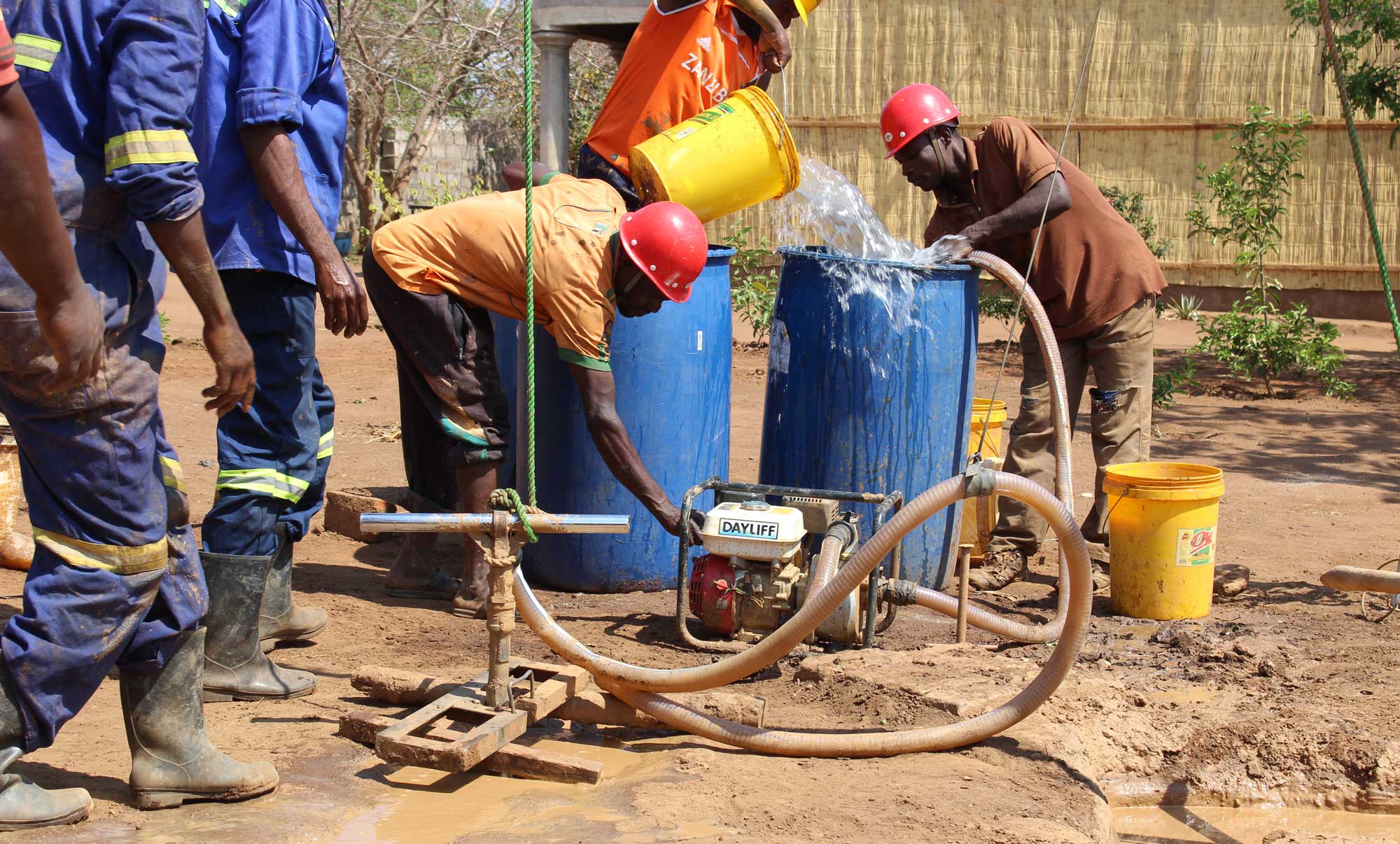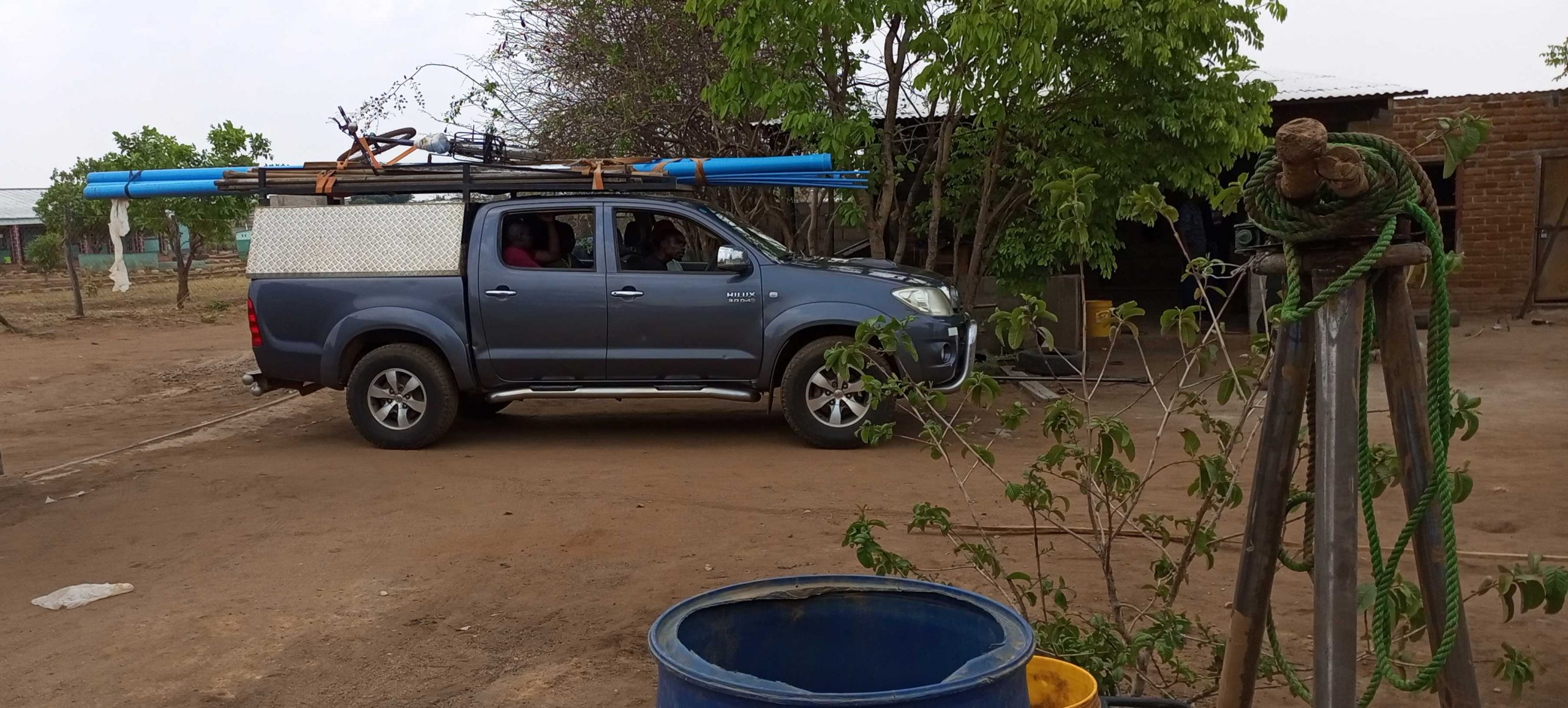Every now and then we are asked why trainers come from “far”. And by “far” we mean the Netherlands, USA, Tanzania and Malawi, among others. The reason for this is simple: we first need to train local trainers and they must have sufficient experience. When we started our first SMART training centre in 2017, we were completely dependent on trainers such as Henk Holtslag, Laban Kaduma and others. And not only for borehole drilling and pump production, but also for Vertical Electrical Sounding, keeping bees and designing solar systems.
Significant steps have been taken in recent years in building up training capacity in our own country. Good examples of this are Moses Banda and Gideon Phiri. They were among the first batch to be trained in 2017. They have gained a wealth of experience and have been assistant trainers in 2018 and 2019. Now four years later they are the head trainers of the training in Jacana’s new SMART training centre in Petauke.
Gideon Phiri explains
Moses Banda (right) explains
After two weeks of training welders, the drilling tools are ready.
Drillers can then be trained while the welders concentrate on pump production.
The technical training ended last week and no one had to be flown in from abroad. Jacana is very proud of the Zambian trainers who have worked very hard over the last 5 weeks. During this training Nash Mono and Ackson Nyirenda assisted partly with the intention of building more training capacity.
Gideon training a welder
These were intensive weeks with theory and lots of practice. It is wonderful to see how the teachers’ years of practical experience have refined the techniques. This is the first technical drillers training where none of the drilling pipes or drill bits broke. However, a few drill pipes did fall into the borehole (by accident), giving the trainees the opportunity to learn how to fish them out of a deep borehole.
It is not only physically very hard work, there is also quite a bit of knowledge involved in drilling a borehole. For example, how do you ensure that the borehole does not collapse? How do you determine where you allow groundwater to flow in? How do you keep the borehole clean and prevent contaminated surface water from seeping into the borehole? etc.
Moses theory lessons
In addition to the two boreholes they drilled (21 and 25 meters deep respectively), the trainees also learned how to install pumps on existing wells. Two existing open wells near Petauke SMART Centre were neatly closed off with a rope pump, so that the water in the well is no longer polluted by buckets or other things that accidentally fall into it. That same day, other potential customers from the immediate vicinity came to the SMART Centre to ask how they could get such a pump.
Preparations for washing and development of the borehole
Although the training is finished, Jacana believes that the trainees are not quite ready to drill boreholes for customers. To gain more experience, they will first drill a borehole at their own houses. Each borehole goes through different soil layers, is in a different environment and therefore has its own unique challenges. The trainees must learn to deal with unexpected problems in a creative, efficient and above all high-quality way. Once each driller has their own borehole and they have learned from their mistakes, they can start working for customers.
The first team leaving the SMART centre for the first out-door drilling site.
Also in this newly trained group are probably a number of people who will train other Africans in a few years. As a result, the “Simple Market-based Affordable and Repairable Technologies” (SMART) can be further scaled up. While it also gives Jacana the opportunity to focus step by step on other important topics and to set up a similar network. For example, we are currently investigating the bee sector and the “renewable energy” sector (solar).
Jacana is very proud of the trainers, their assistants and the students.

